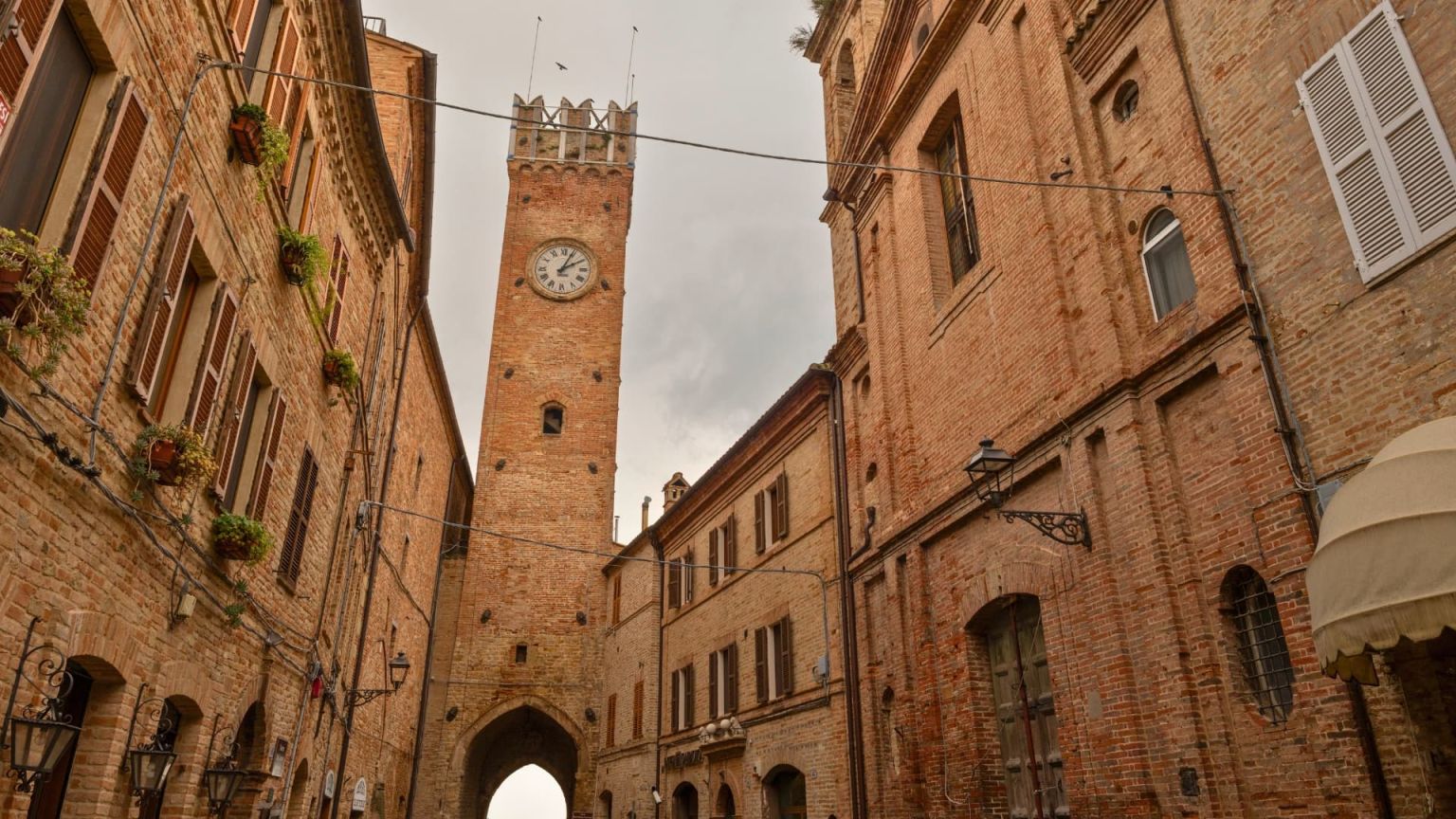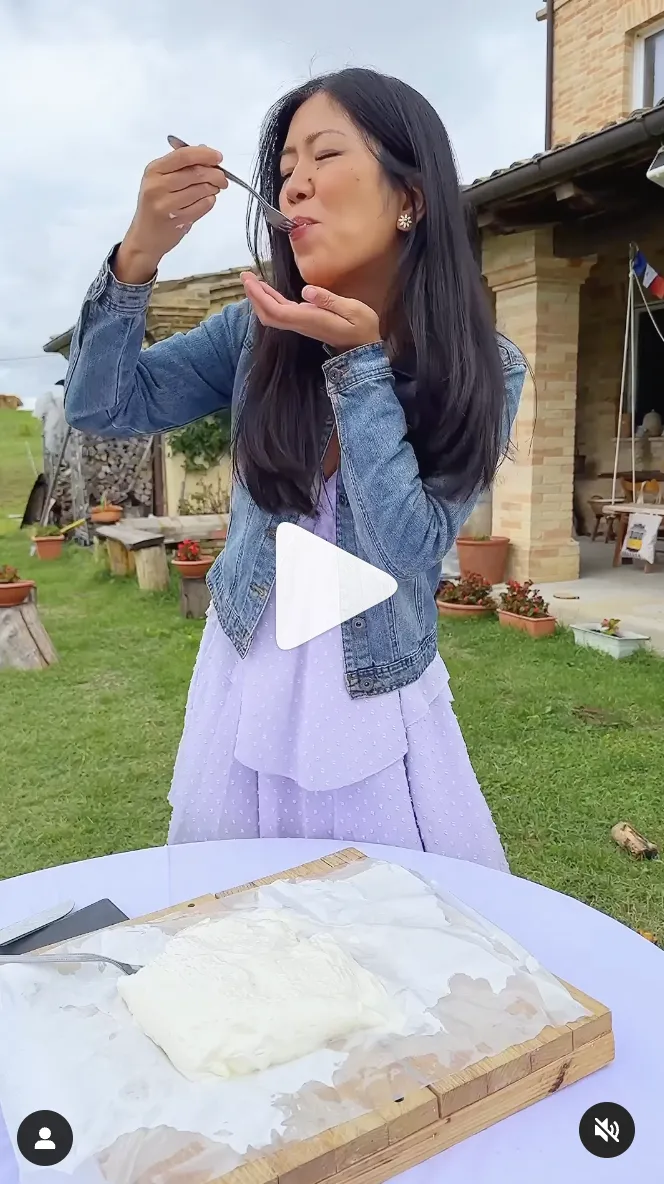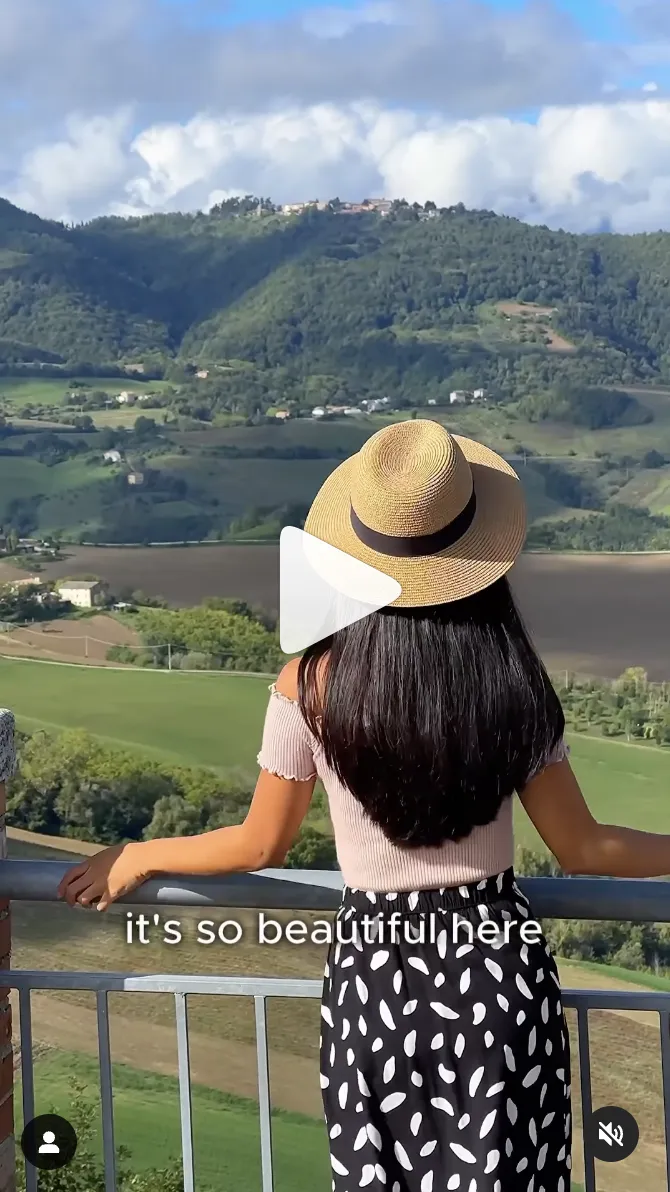“To live quietly and healthy, come back to Matenano”: thus states an old popular expression, encouraging enjoyment of a serene, mellow and relaxing atmosphere.
Santa Vittoria in Matenano rises on the hill of the same name, a gentle, lush upland that surrounds this small, enchanting village in a peaceful, comforting embrace. A dimension far from the chaos of big cities, where time flows slowly, the air is fresh and the relationship with nature is always alive and constant.
In short, in Santa Vittoria in Matenano life is truly “quiet and healthy”. It is a hidden pearl in the heart of the province of Fermo, in the hinterland Marche region, with its little more than 1,200 inhabitants - who seem to be very long-lived! - its easy-going lifestyle and almost total absence of cars, which are unnecessary and can be kept parked. But this green-filled community also holds so many historically significant buildings - so many that you'll wonder how it can contain them! Come with us to discover them all and to be astonished.
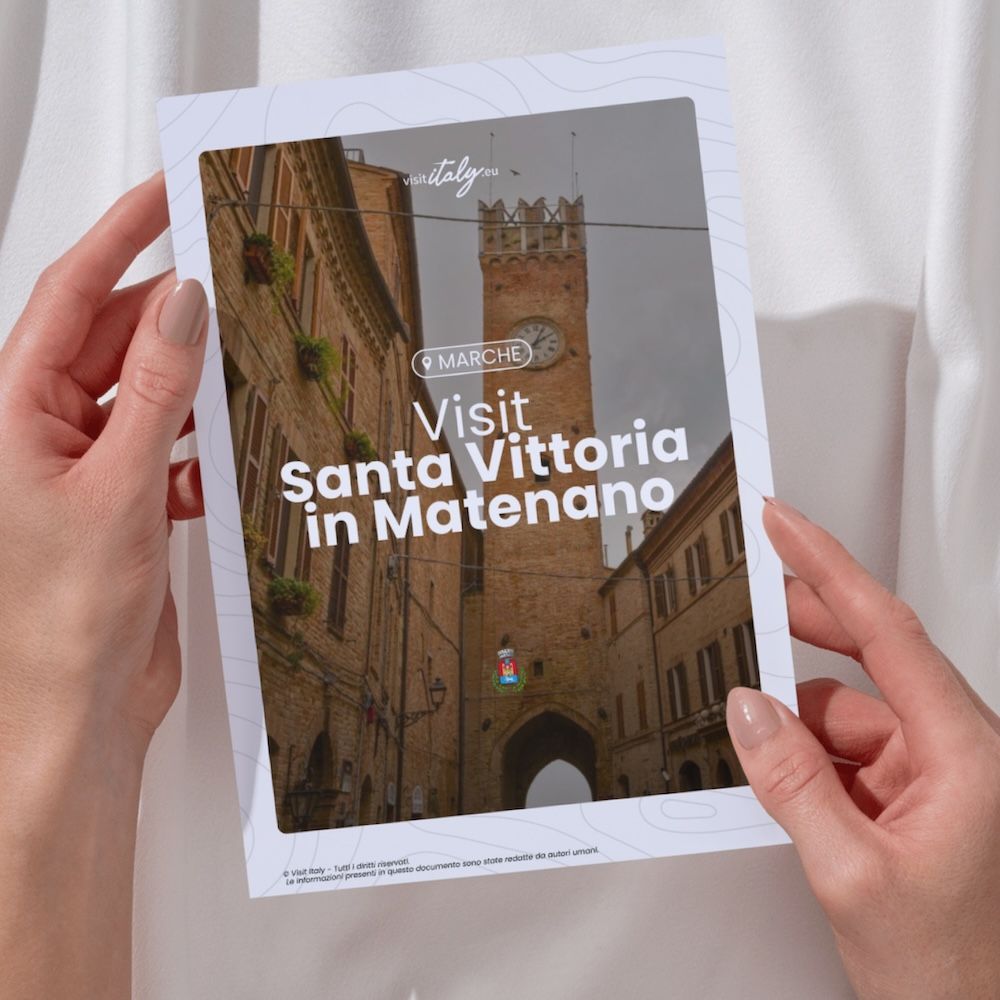
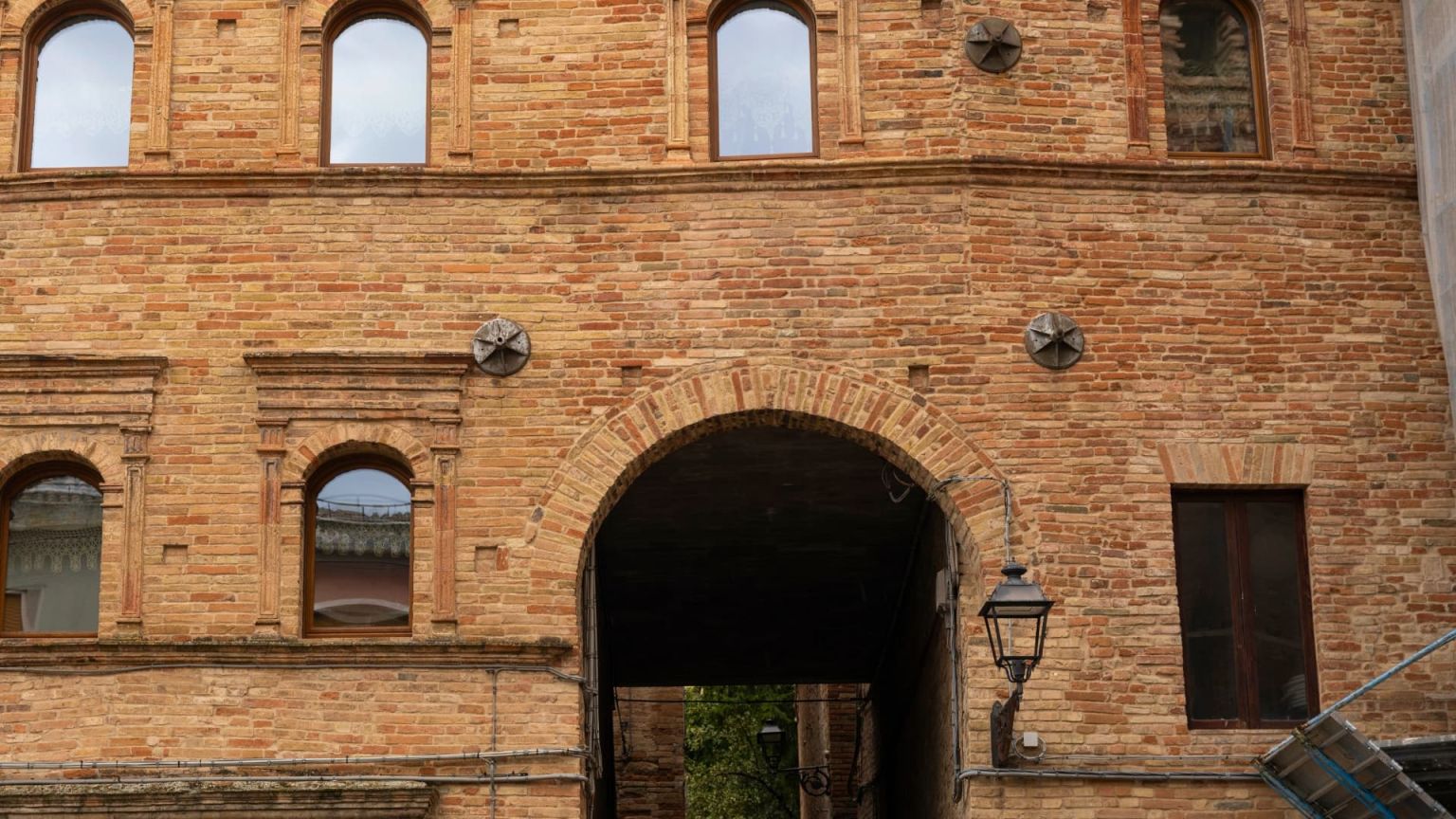

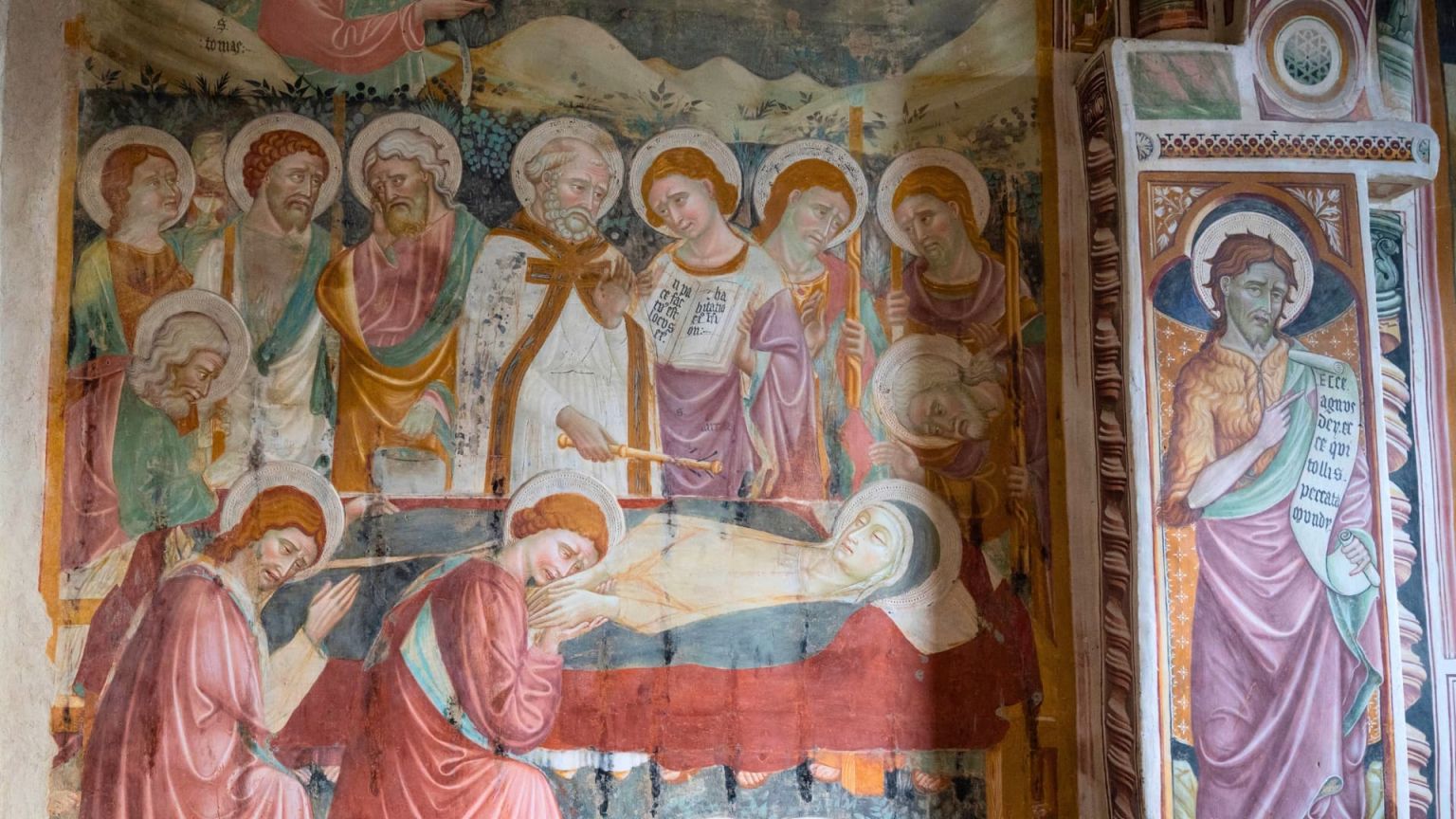
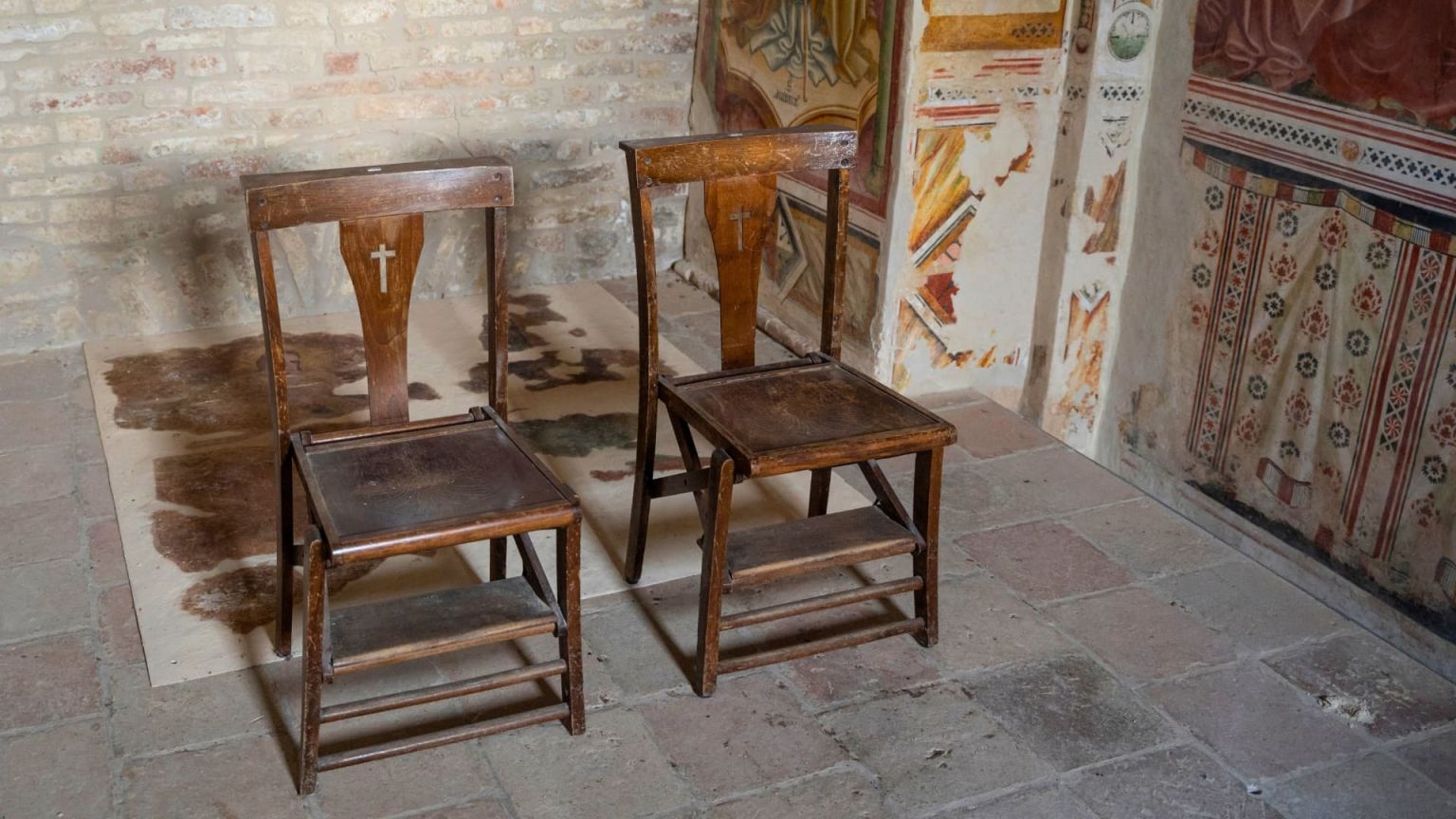
Santa Vittoria in Matenano: hill and mountain for hiking of all kinds
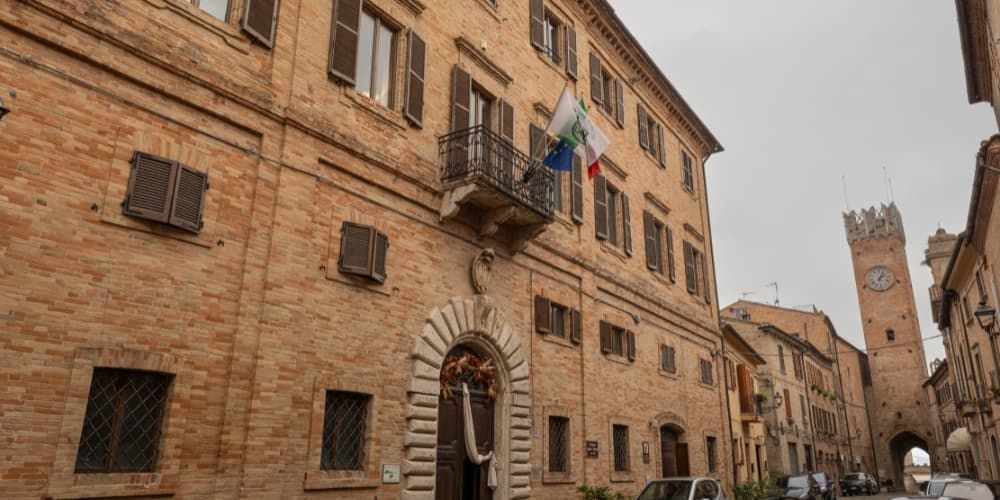
The throne of Santa Vittoria is the Matenano hill, a 600-meter elevation above sea level, which is surrounded by the valleys of the Ete Vivo, Aso and Tenna rivers. In the idyllic atmosphere painted by the green of the woodland and the blue of the fresh water, it is impossible to miss the peaks of the Sibillini Mountains, just over 20 kilometers away, whose profiles can be easily seen when the sky is clear. Santa Vittoria is in fact part of the Sibillini Mountain Union, along with five other towns from Fermo province and five from Ascoli Piceno province.
Massive, imperious and with an evocative name, those that Giacomo Leopardi called the “blue mountains” represent a must-see destination for trekking lovers, who head to the famous National Park to explore its breathtaking landscapes, such as the striking Infernaccio gorges, reserved for experienced walkers.
A gentler and reassuring territory surrounding the village is also an interesting trekking destination, for those who prefer easier and more relaxing routes. Along the way visitors come across wildlife, such as wolves or golden eagles, and countless historical relics, such as the ancient Milk Spring.
However, this friendly land took on a markedly disturbing form in the 2016 earthquake, which caused widespread damage in the province of Fermo, but also those of Macerata, Rieti, and Perugia; even today, unfortunately, some buildings in Santa Vittoria, which like many other villages was affected by the quakes, cannot be visited for safety reasons.
But what did the ancient civilizations from Santa Vittoria in Matenano leave us?
Explore Santa Vittoria in Matenano and the nearby villages with this tourThe places of monastic life and nobility
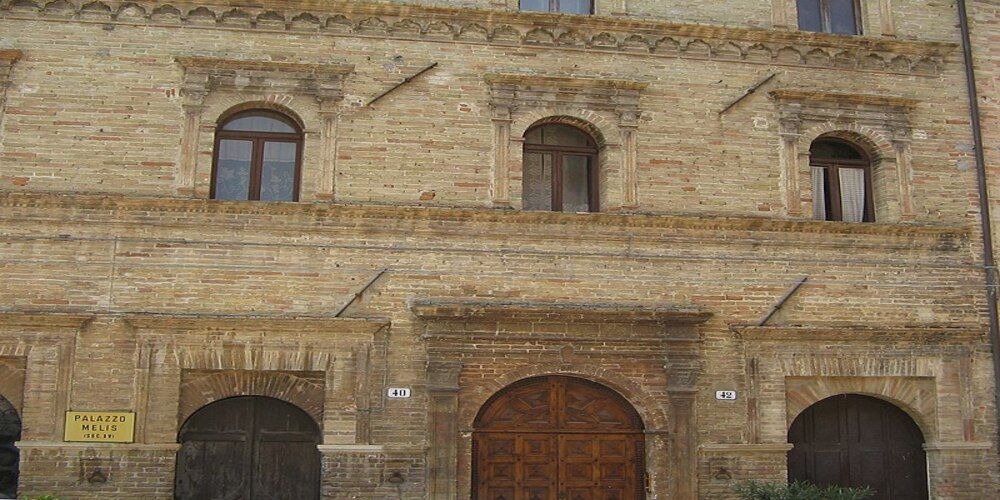
Santa Vittoria in Matenano was founded in 898, when a group of monks led by Abbot Pietro I of Farfa moved there to escape Saracen invasions, taking the monastery of S. Ippolito and S. Giovanni in Silva. Since the 13th century, moreover, Benedictine nuns, currently living there, have inhabited it.
In this place, evidence of monastic life and culture can still be admired, but above all it is possible to feel a contemplative atmosphere, a distinctive spiritual flow. To recollect and evoke this dimension of inner peace and communion with the Earth, thematic itineraries should not be missed - they include Santa Vittoria in Matenano and many other municipalities of Fermo, the so-called Places of Silence, which are all those sites on the Marche Apennines that became home to hermits and monks.
But Santa Vittoria was also home to several noble families from the Marche, such as the Melsis, Della Torres and Lampones, who between the 16th and 18th centuries built splendid palaces there that are still visible in their splendor today. An ideal bridge between the religious and secular worlds is the beautiful former convent of St. Augustine.
The footprints of the Farfensi

The group of Farfensi monks who escaped the fury of the Saracens was actually one of the handful of survivors of this monastic order, and in Santa Vittoria in Matenano they established their spiritual seat as well as their home, a fortress to protect them from further attacks. They were also responsible, in 934, for bringing there the spoils of Santa Vittoria, to whom the homonymous basilica and of course the name of the town were dedicated.
Ratfredo, the abbot in office at the time, decided to designate that place as the seat of the Abbey Vicar of Farfa, whose central monastery is located in present-day Fara Sabina, in the province of Rieti. From that time on, the village experienced great splendor and economic expansion, because the Farfensi contributed to the development of innovative agricultural and building techniques, gave the right boost for handcraft activities, especially in what concerns woodworking and copper, and established several art schools. They were also custodians of one of the first documents in the vernacular language, the Ritmo di Sant'Alessio, now preserved in the Ascoli Piceno Municipal Library.
Their presence continued for several centuries until the demolition of the monastery in 1771.
The mark left by the Farfensi, however, is reflected in the many churches and buildings still present in the village: for example, in the sarcophagus of Santa Vittoria in the so-called Collegiata, the Sanctuary where her relics are kept, but also in the Cappella degli Innocenti, thr Chapel of Innocents, with its splendid 15th-century excellently preserved frescoes, and of course in the Abbot Odorisio Tower, the gateway to the village.
What to see in Santa Vittoria in Matenano
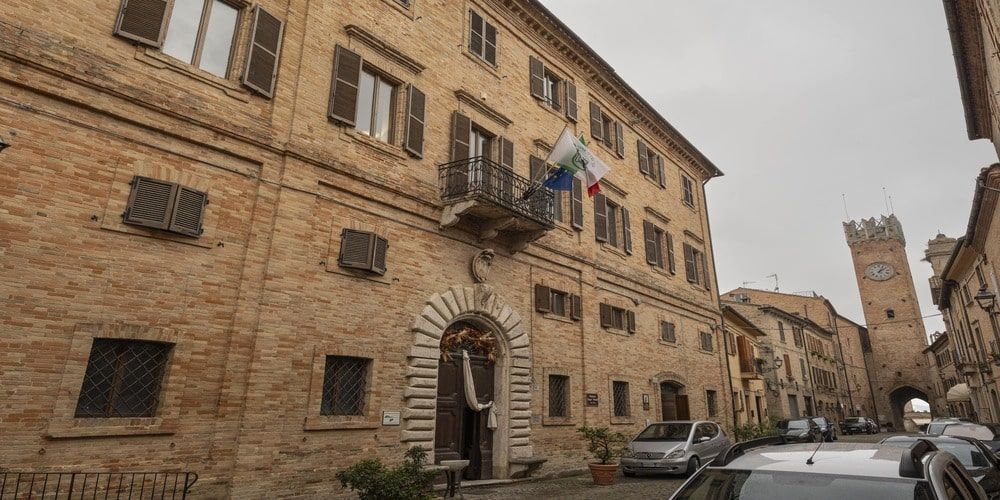
The highlights of Santa Vittoria in Matenano, as you may have guessed, are many and widespread in its historic center but also in its surroundings. In the core of the town and beyond you will find many churches, as already mentioned, evidences to the passage of the Farfensi Monks but also much more dating back to later eras. If, on the other hand, you love to sit and contemplate the landscape and walk in nature, you will surely find enough to be satisfied.
Here is what to see in Santa Vittoria in Matenano according to us.
Sant'Agostino Church
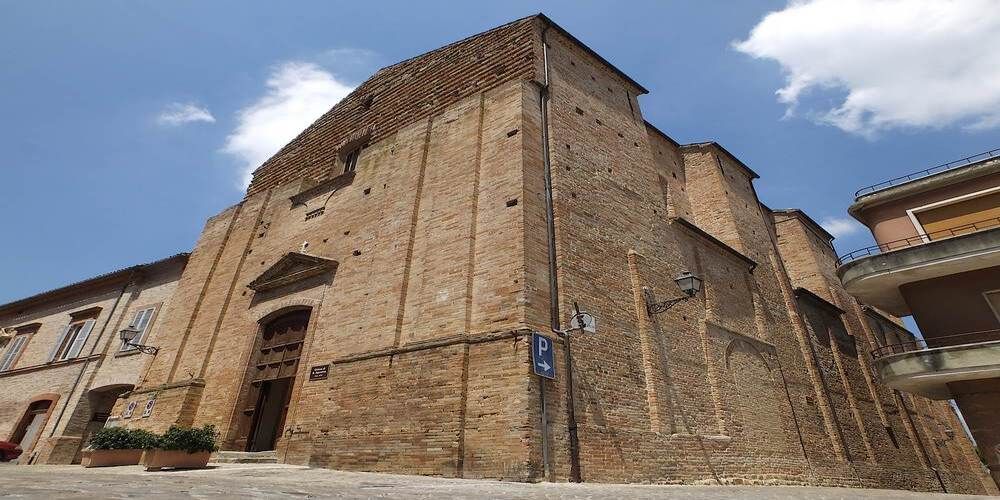
Among the things to see in Santa Vittoria in Matenano, let's start with the aforementioned Sant'Agostino Church, which is part of what was the original site of the Farfensi monastery. In the 19th century, the portion used as a convent became the seat of the Town Hall and holds very important ancient documents in its archives. Here it is also possible to admire an original Nativity by painter Vincenzo Pagani inside the Council Chamber.
The complex, however, still houses the church of the same name, inside which there is a 17th-century organ, recovered from an even older one.
For all these reasons we could call this building a summa of the spiritual and the political worlds.
Church of the Resurrection
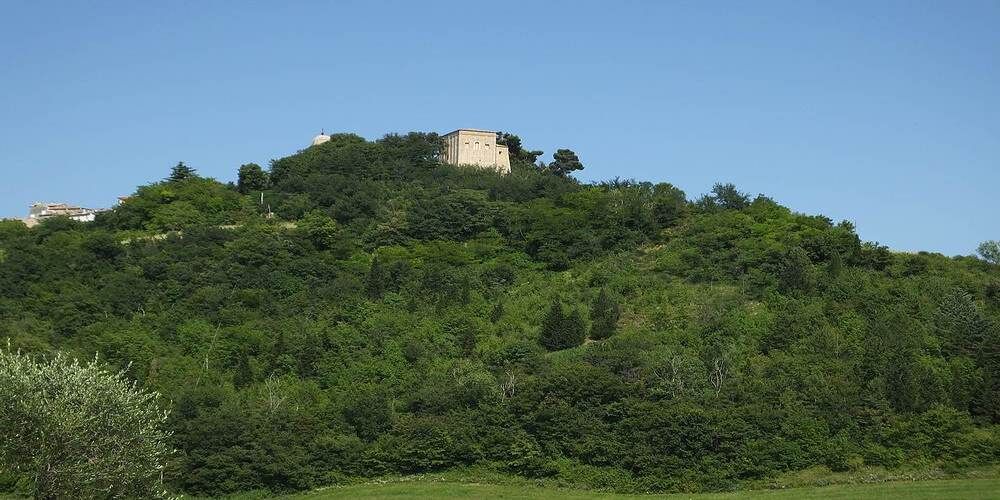
The Church of the Resurrection, known as the Cappellone, is also derived from the ancient Farfa monastic complex and therefore does not show signs of the original medieval architecture. Given the damage from earthquakes and landslides over the centuries, which made it uninhabitable in the 18th century, demolition materials from the buildings (castle, church and monastery) were used to create what we see today. Inside is the Cappella degli Innocenti, Chapel of the Innocents, where some 15th-century frescoes are excellently preserved.
Monastery of Santa Caterina

Located in the historic center, the Monastery of Santa Caterina dates back to the 14th-15th centuries and is a splendid example of medieval architecture, which moreover offers a breathtaking view of the Sibillini Mountains. It is still populated by Benedictine nuns, who welcome pilgrim groups wishing to spend time praying and meditating, young people attending spiritual retreats, as well as couples wishing to take premarital courses in this contemplative place.
La Collegiata
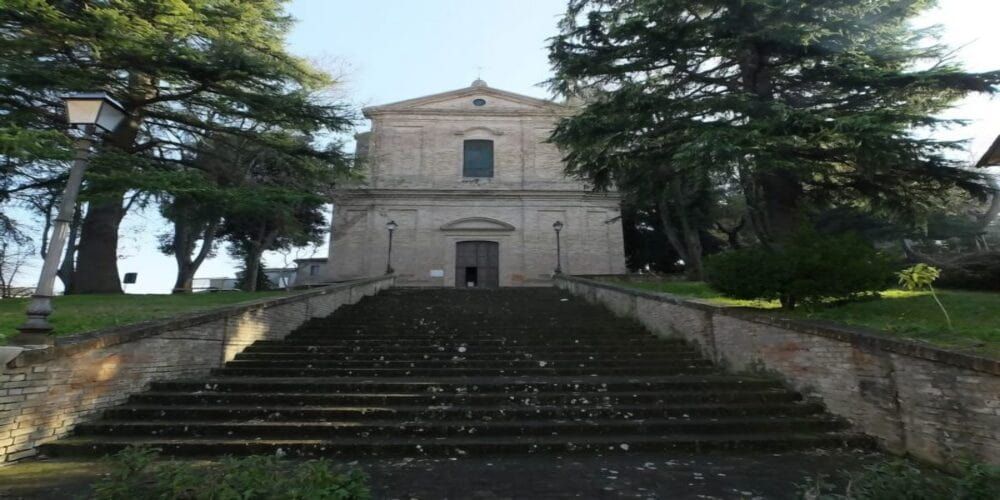
The Sanctuary of Santa Vittoria, also known as La Collegiata,anctuary of Santa Vittoria, also known as La Collegiata, holds the crypt and spoils of the patron saint. It was built many centuries after the arrival of the relics and is in fact an 18th-century neoclassical building. In addition to the richly carved marble sarcophagus, the Sanctuary houses numerous frescoes and valuable sacred gold and silver art objects.
Church of Madonna degli Angeli
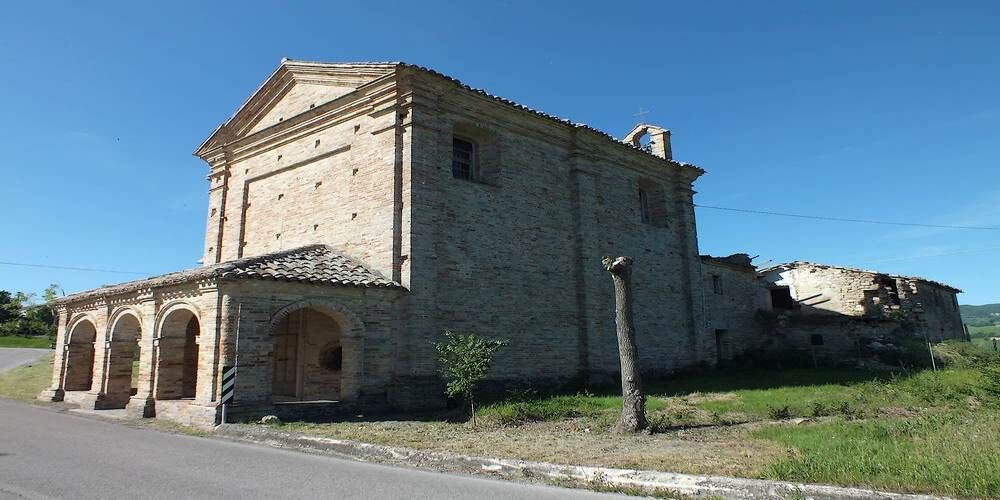
Just outside the village lies the striking Church of Madonna degli Angeli, an example of 15th-century architecture. Inside you can admire a fresco depicting the Virgin of the Milk, in other words, captured in the act of breastfeeding the baby Jesus, while a pair of musician angels surround her. The painting, unfortunately, is partly damaged.
Church of San Salvatore
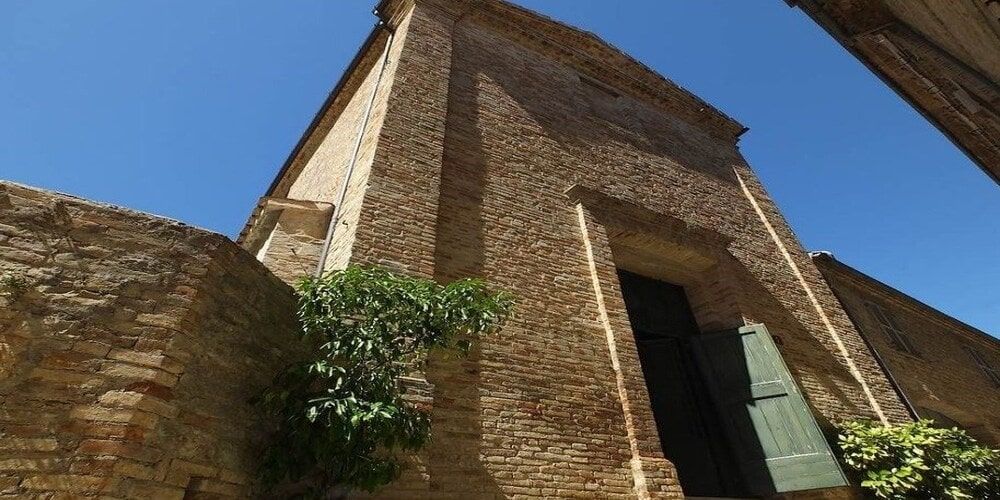
A 19th-century church in the center of the village, San Salvatore was formerly located in country areas but was “moved” by the wishes of the townspeople more than once to its present location.
Numerous sculptures of sacred subjects are found inside: one of Our Lady of Sorrows, Madonna Addolorata, is on the high altar; one to St. Valentine, from the former demolished church of the same name, is on the right altar; a painting by the artist Nicola Monti adorns the left altarpiece.
It is currently the only accessible church as a result of the earthquake, and religious services, from mass to weddings, are celebrated here.
Church of the Madonna della Valle
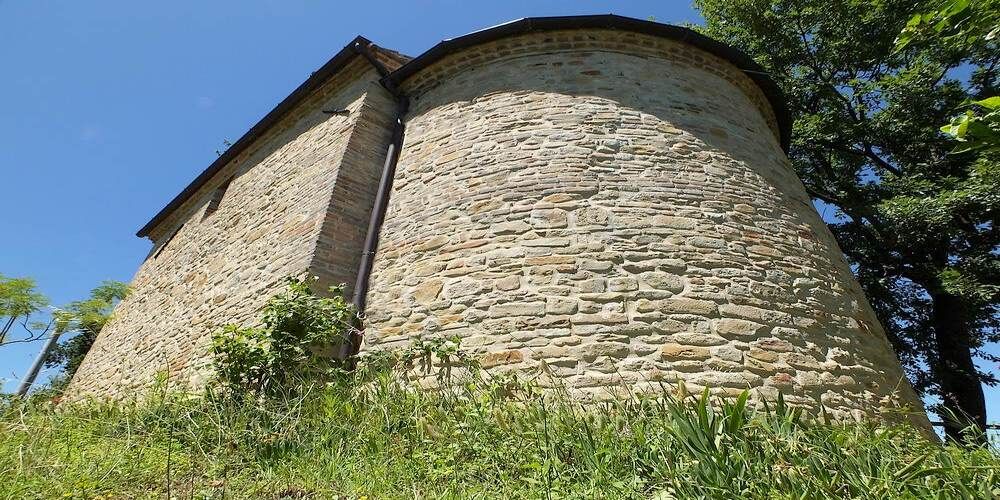
Located out of the center, in an area formerly known as “Pian Santa Maria,” stood the parish church of Santa Maria della Valle. This was for a long time home to the remains of St. Victoria and in fact from 1771 to 1793 housed the sarcophagus that is now in the Sanctuary dedicated to the martyr. The site of the church in which it is located corresponds to the Piermarini Garden, but unfortunately it is not currently possible to access it.
Teatro del Leone (Lion Theater)
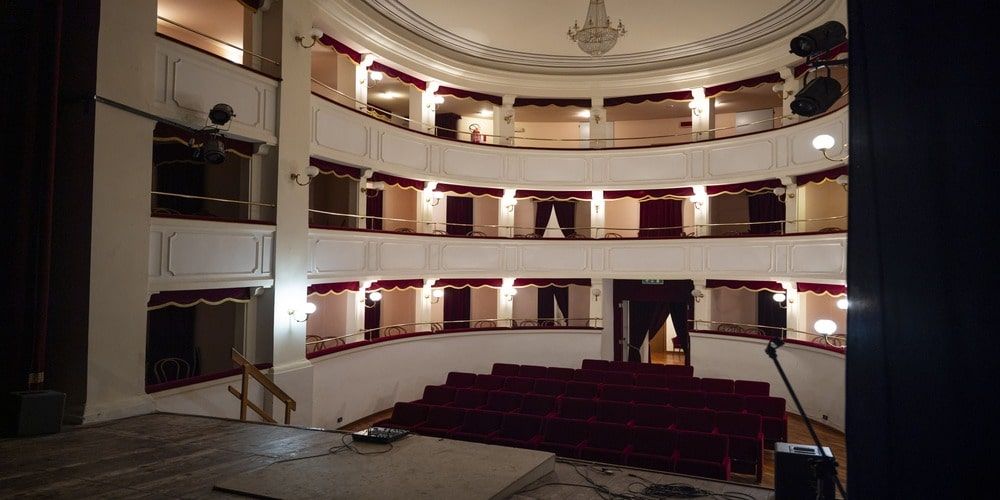
The Teatro del Leone, Lion Theater, stands near the gate of Santa Vittoria in Matenano, the Tower of Odorisio. It was created at the behest of a group of wealthy citizens who felt the need for a venue for entertainment but which was also a place to gather and represent their social class.
The Teatro del Leone was built in the nineteenth century in some municipality locations, but very little of its original structure remains today, due to various earthquakes and a serious fire in 1965, but numerous restorations have been carried out in recent times in order to restore an appearance as faithful as possible to that of its construction.
Milk Fountain
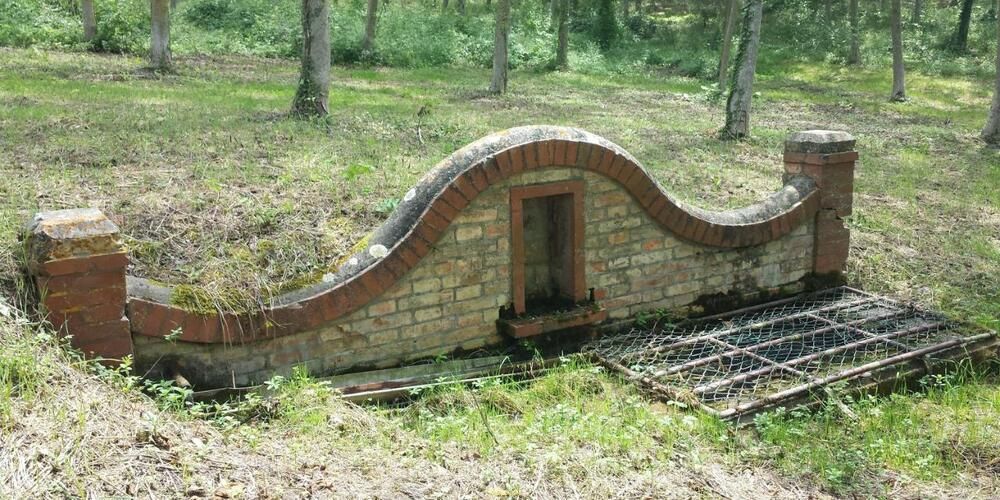
A must-see among the things to see in Santa Vittoria in Matenano, the Milk Fountain is a pretty little fountain that, according to legend, gave a drink to the monks who were transporting the saint's holy remains to the monastery and through prayer were able to quench. Later, it is said that its waters helped mothers enrich the milk supply for their newborns. That is why a statue of St. Victoria was added to this fascinating symbolic place.
Tower of Odorisio
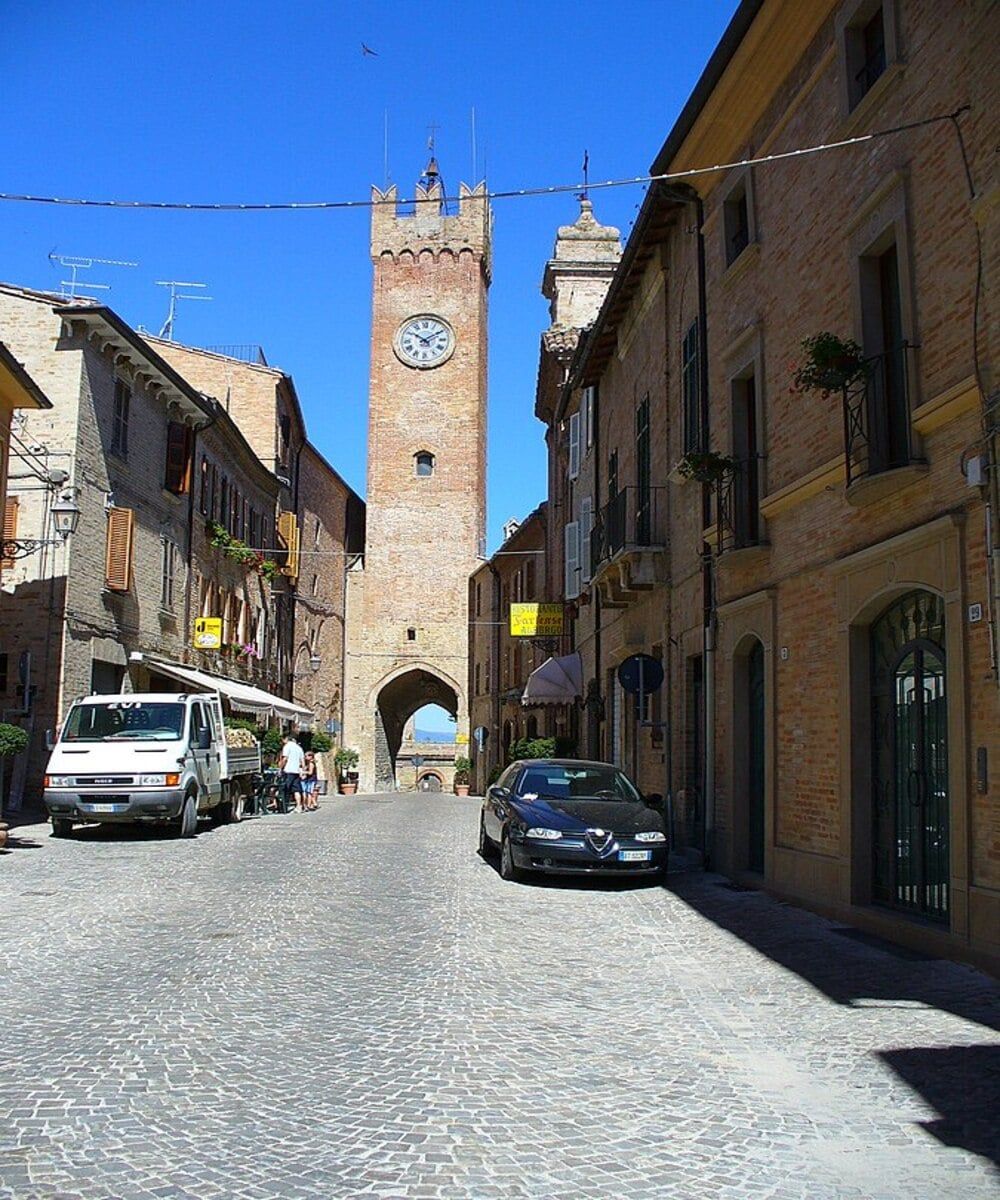
The unquestioned symbol of Santa Vittoria in Matenano is certainly the famous Tower of Odorisio, the Abbot who had it built between 1236 and 1238 for protective purposes. Imposing and dominant in the center of the town, the Gothic tower is 27 meters high and dominates among the palaces of ancient noble families and formerly among sections of the town wall. At its base is an ogival arch, a portal that becomes the protagonist of an evocative natural phenomenon in which the sun sets exactly inside it. A festival is dedicated to it in August.
Rastelli Mill
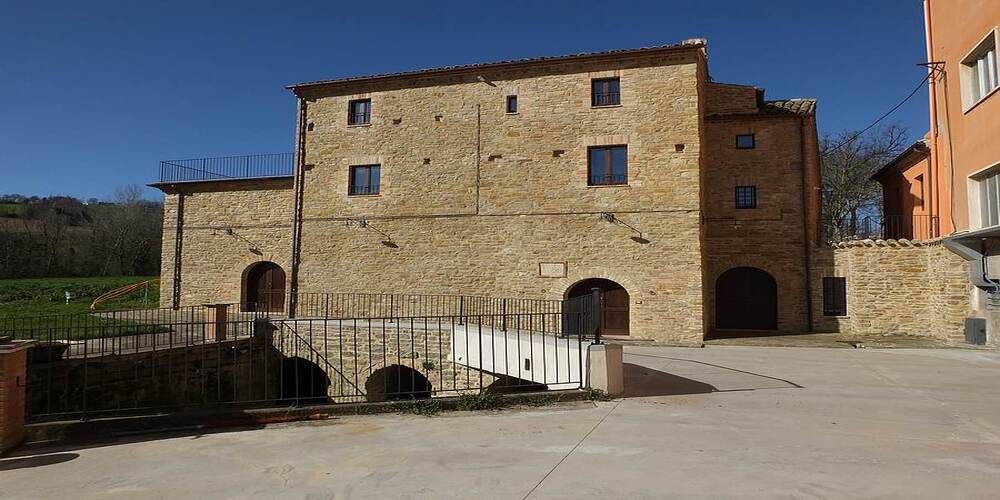
If you decide to move into the woods around the town, you will come across the hamlet of Ponte Maglio, toward Montecchio, where Molino Rastelli (Rastelli family’s Mill) finds its place of honor. Today, this striking building is a prospering production center for fine flour, but with a very ancient history behind it, beginning in the 14th century, when it was one of the first to run on water.
Balcony of the Sibillini Mountains
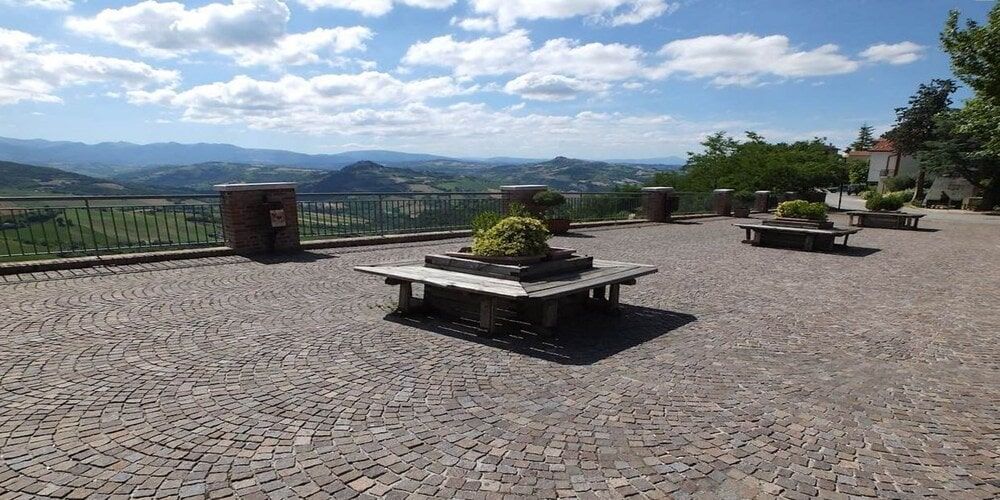
To complete the tour of things to see in Santa Vittoria and admire a breathtaking view from the Matenano hill, spend a few minutes at the Balcony of the Sibillini at the entrance to the village, an exclusive corner on the mountains and forests of the Fermo area that will completely immerse you in the atmosphere of this out-of-this-world place.
The art of leather: shoe factories

The province of Fermo, along with that of Macerata, has always been famous for its handcrafted footwear production. Mastery in working with leather, hide, and also synthetic materials, has enabled the small and medium-sized enterprises of the so-called “Fermo-Macerata District” to produce shoes and related components for retail and wholesale on behalf of big brands in the fashion industry.
In Santa Vittoria in Matenano, for example, we find Calzaturificio Farfa, which manufactures shoes for the famous Tod's, and Stevini Shoes, which works for NeroGiardini and makes direct sales of male models.
From olive oil mills to wineries: the land treasures

The food and wine tradition is very rich and attractive in Santa Vittoria in Matenano, following in the footsteps of the province of Fermo and the Marche region in general. The local climate favors the growth of indigenous vines and olive trees, which is why several entities produce fine typical Marche wines, especially the Falerio, and fine olive oil - one above all the Frantoio Belleggia.
Not to forget the cured meats and pork dishes, of which there are a variety of farms with local breeds, and of course classic and egg pasta. We also recall the fine all-purpose flours from Molino Rastelli.
Festivals, feasts and celebrations
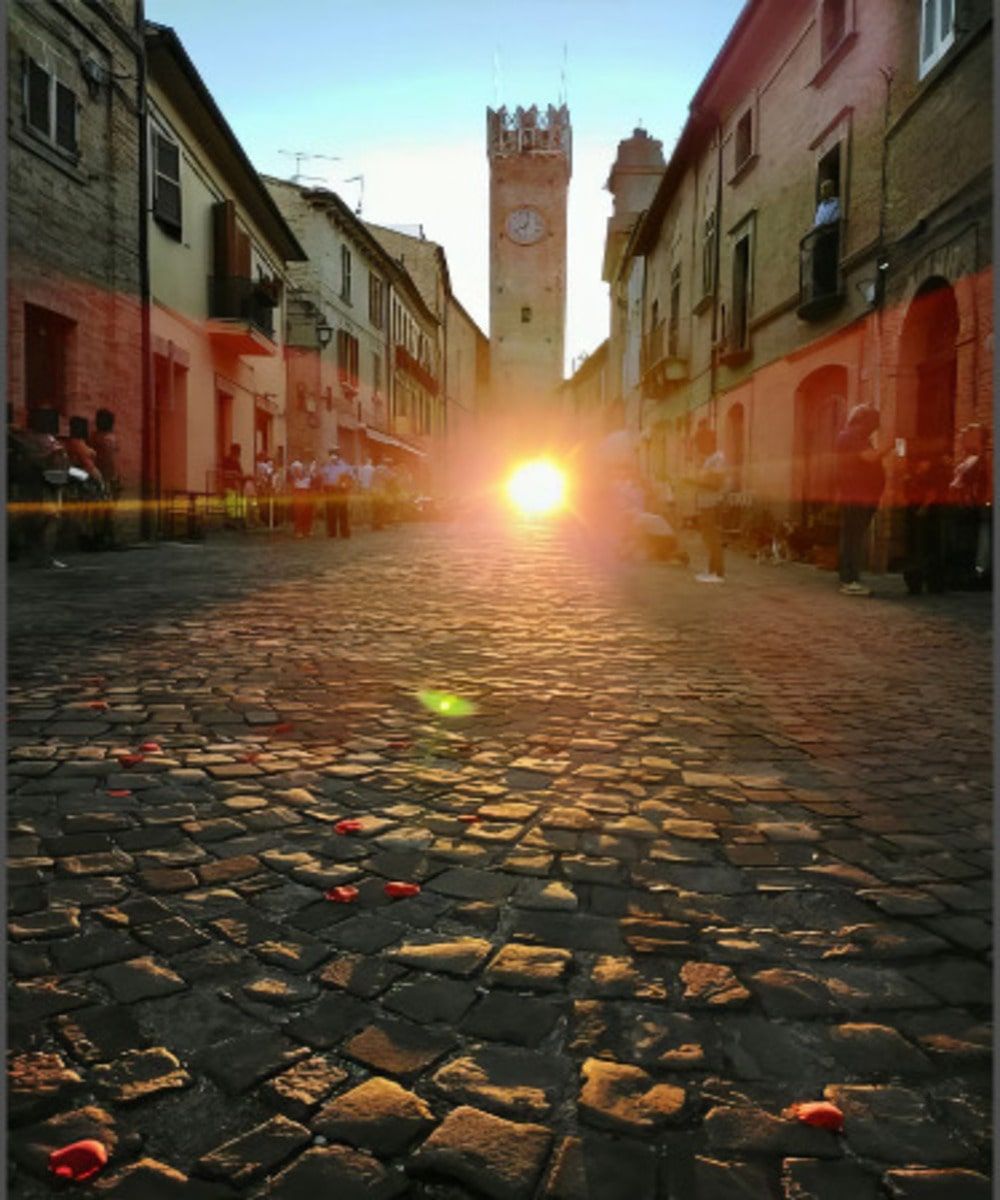
Santa Vittoria in Matenano is a very lively center where many festivals, fairs and celebrations take place throughout the year but especially from late spring to autumn, when weather is milder. This is possible thanks to the unity and enthusiasm of the townspeople and the resourcefulness of the pro loco, formed by the young but also the not-so-young local people.
The season begins in May, with the Ascension Festival, or “Ascensionetta,” which includes a collective snack with typical products, and continues with the feast of the patron saint in late June. But the main event of the year in Santa Vittoria is certainly the Festival of the Sun in August, which celebrates the magical moment when the setting sun falls perfectly into the portal of the Tower of Odorisio.
The Canestrelle, a popular and beloved historical reenactment in the Marche region, is celebrated in August as well, featuring a parade of figures in nineteenth-century peasant dress carrying wicker baskets full of farm goods.
Summer is left behind and autumn is greeted with the chestnut festival, when the scents of burning embers animates the sparkling air of early October.
How to get to and around Santa Vittoria in Matenano
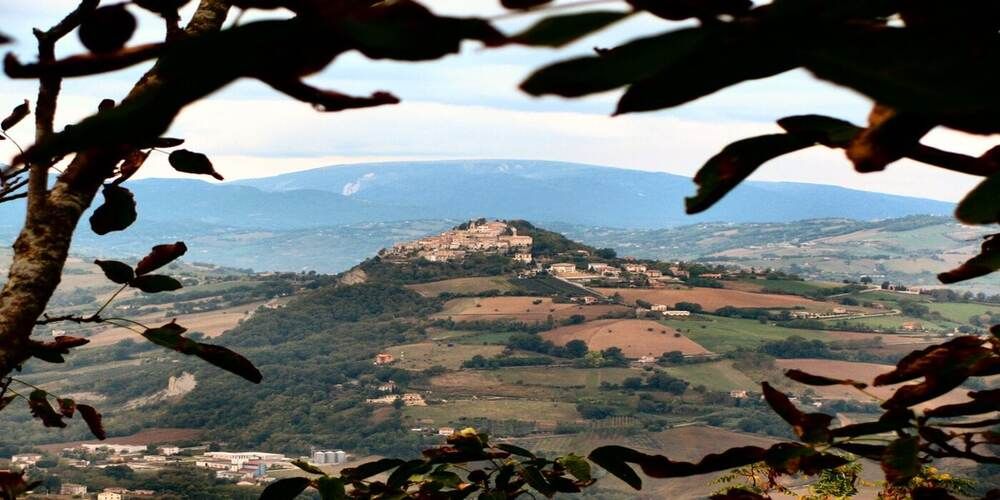
Located in the heart of the province of Fermo, Santa Vittoria in Matenano can be reached most easily by car. It is about 30 km and a 30-40 minute drive from the capital, and about an hour from Ascoli Piceno and Macerata.
Alternatively, you could use public transportation but you have to consider the long journeys over the Apennine ridges, several intermediate stops and changes between buses. That is why our advice is to have your car ready.
Once you arrive in Santa Vittoria in Matenano you can safely park it and forget about it, because this enchanting village can be covered and explored safely by foot. Enjoy long walks through the medieval-looking streets, breathe in the breezy hill air and let yourself be enchanted by the dreamlike beauty of unique landscapes.

